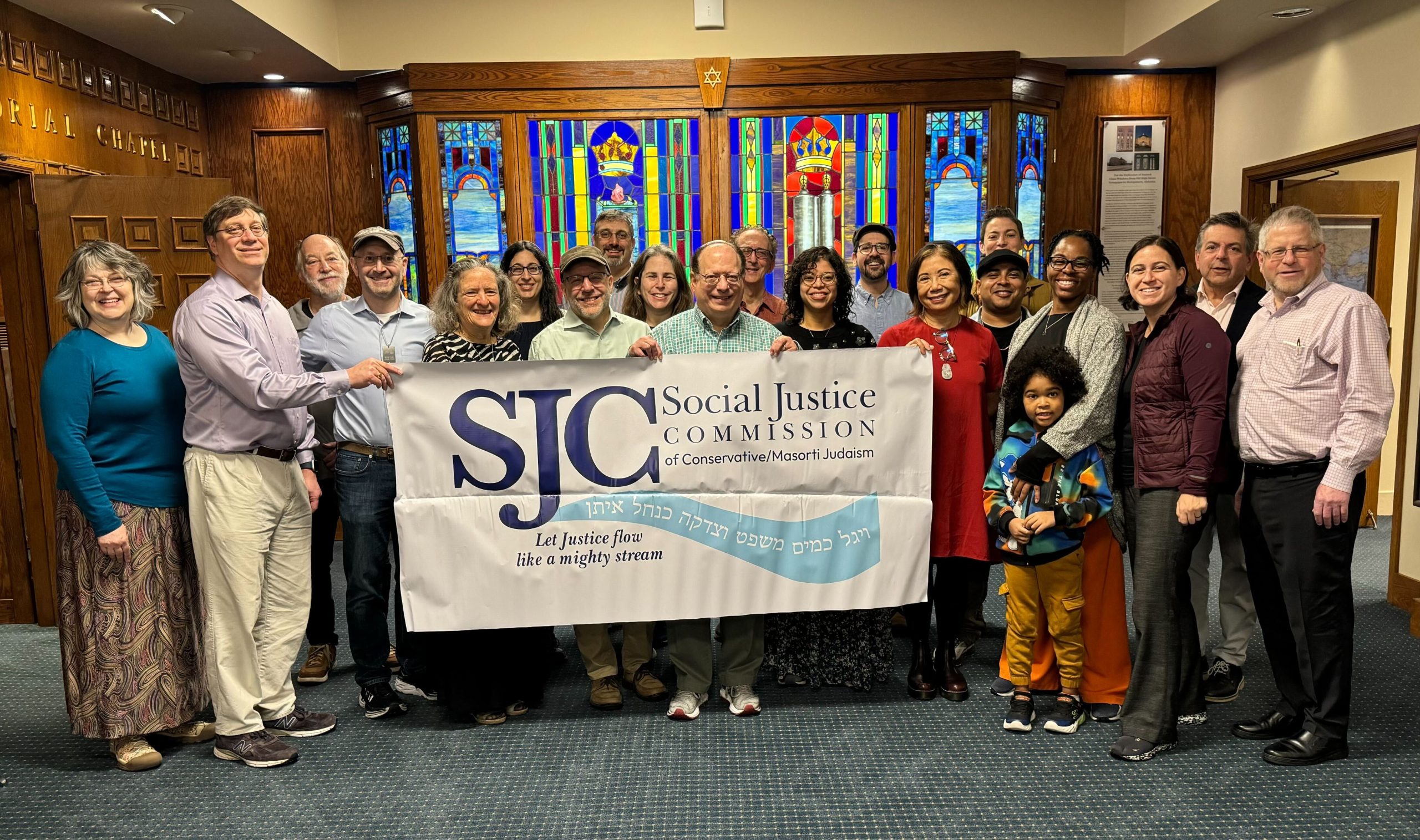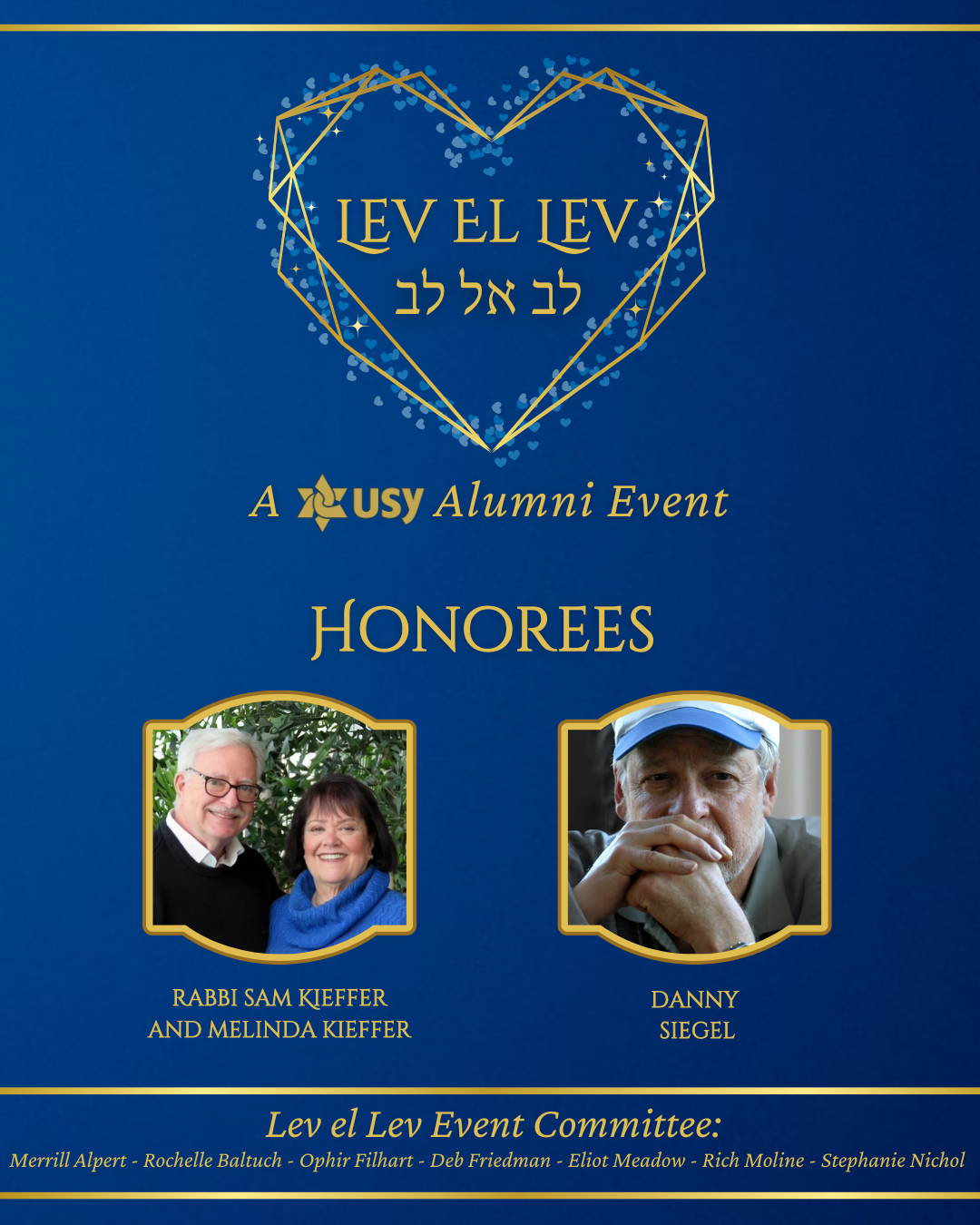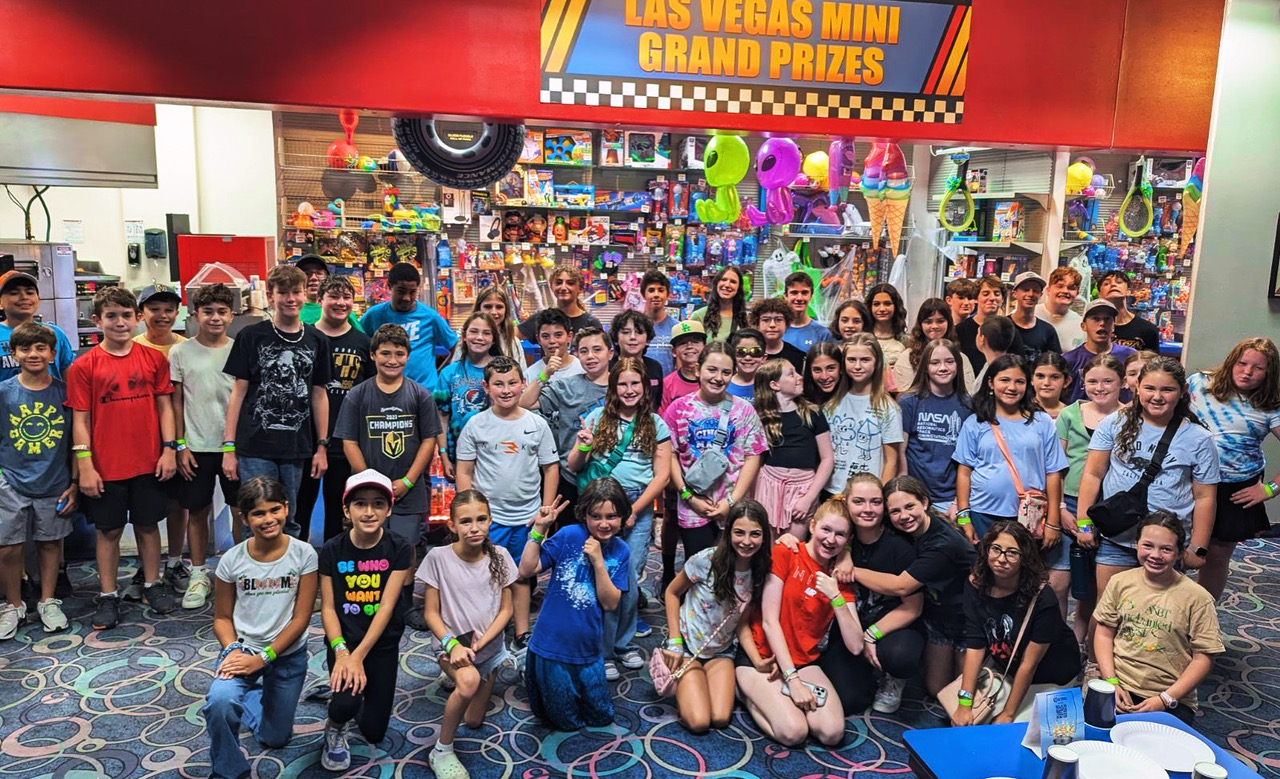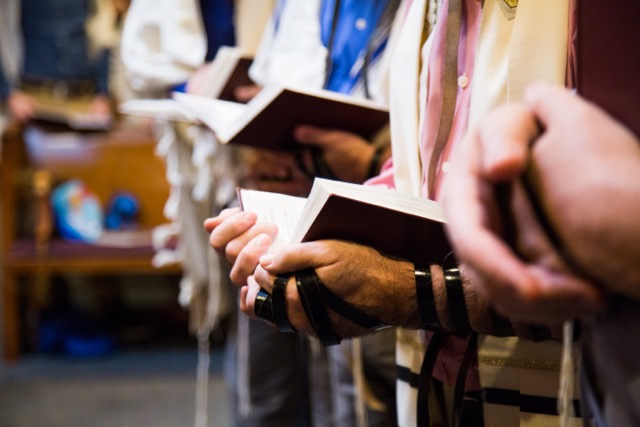
March 3-7th, 2024
Rabbi Amy Eilberg
On March 3rd, 2024, 20 leaders of the Conservative/Masorti movement gathered in New Orleans for a four-day Racial Justice Pilgrimage, including experiences in New Orleans, Mobile, and Montgomery, Alabama. The group included 13 rabbis, 3 cantors, and four lay leaders, including top professional and volunteer leaders of both the USCJ and the Rabbinical Assembly. Most members of the group were already deeply engaged in the work of racial justice and inclusion, and participate in either the Conservative/Masorti Social Justice Commission, its Racial Justice Subcommittee and/or on the Movement-wide Task Force on Jews of Color Inclusion. Among us were four leaders of color.
The goals of the trip were to deepen our learning about racism in America, intensify our commitment to the work of racial justice and inclusion, strengthen our connections to one another, and dream together about how to further this work in our movement. As you read participants’ accounts of their experiences, you will see how painful and how profound it is to face the realities of racism in America. Having seen and taken these things deep into our hearts and minds, I believe that our engagement in the work will grow ever stronger. May we as a movement be inspired by the reflections of these leaders, and may inspiration move us to action to make our communities more just and inclusive places.
Rabbi Edward Bernstein
Growing up in Chicago, I was raised on the myth emblazoned on Illinois license plates: “Land of Lincoln.” Illinois produced our country’s greatest President, Abraham Lincoln, who defeated the evil of slavery and preserved the Union. I believed that Illinois, like other states in the North, was a free state and that America’s tyrannies of slavery and racial segregation were limited to the South.
As an adult, I’ve learned that the goodness-of-the-North myth was exaggerated. Chicago, for example, is a deeply segregated city in which redlining has condemned generations of African Americans to inferior housing, education, employment opportunities and health. I further learned that my hero Lincoln was deeply flawed. In the midst of the Civil War, he proposed sending freed Black people to Africa so that they would not have to be integrated with white America. Lincoln, to his credit, evolved in his Presidency and listened and learned from Frederick Douglas and other Black leaders. I still admire Lincoln, but my education over the years helped me realize that his god-like mythos of goodness was exaggerated.
Traveling with leaders of the Conservative Movement on the Social Justice Commission’s pilgrimage through the South opened my eyes not only to the tyrannies of slavery and Jim Crow that occurred in the Southern states, but also to the complicity of the entire country—including the North— in these evils. When we visited the Legacy Museum on Slavery and Mass Incarceration in Montgomery, Alabama, I was struck by a display that illustrated how embedded Northern states were in an economy that was built on slavery and human trafficking. The textile mills of New England processed the cotton picked by enslaved labor in the South and generated America’s growth as a global economic power. Though New York State had long banned slavery in its borders by the start of the Civil War, its economy was fueled by the South through investments of its banks and coverage provided to enslavers by insurance carriers. Many of the banks and insurance carriers that financed the slave economy in the 1800’s continue today as major institutions. Our nation’s economy today was built on the backs of enslaved people.
All of this was shocking enough, but then we travelled a few blocks to the National Memorial for Peace and Justice that memorializes over 4400 African Americans who were lynched in America between 1870 and 1950. Large stone slabs display names and dates of documented lynchings in over 800 counties across the country. It was overwhelming to see stone after stone documenting lynchings throughout the South. But what was shocking was to see stone slabs documenting lynchings in Northern states such as Pennsylvania, Ohio and Indiana. And the Northern state with the most lynchings? Illinois, Land of Lincoln, with 56 documented lynchings. We are all implicated in America’s injustices. As Rabbi Abraham Joshua Heschel taught, “Some are guilty, but all are responsible.”
Rabbi Heather Miller
As the only Black Jew on the trip, the pilgrimage was vastly different for me than it was for the rest of our group. Preparation for going to the land where my family, for better or worse, became American was emotionally challenging. It felt quite vulnerable to read the 1619 Project as a group and my feelings were right under the surface diving back into this during Black History Month, knowing that this trip would take us to some of the places in the book.
Those feelings didn’t change while on the trip. There were many moments that pulled me into myself and it felt exposing to hold that what we were learning was how everyone I was traveling with had been acculturated to see me. As Dr. Beverly Tatum would say, the trip laid “the smog” bare.
I learned a lot that will be applied to my work as a social justice advocate but I also learned a lot about my own family history that was invaluable to me. Grounding myself in my Jewish practice (like having a Hitbodedut moment during davening at the Whitney Plantation) was helpful for keeping me in my body during moments that were incredibly hard. I returned home feeling raw and unable to speak about the experience. Even as I write this, the high heart rate flashed an alert on my fitness tracker.
I am grateful for having shared this experience with peers and leaders in our movement. Though we have a long way to go, I feel affirmed and supported in the commitment to our moving forward together. Shehecheyanu!
Rabbi David Lerner
After visiting plantations, and museums about slavery, racism, and mass incarceration, I have a deeper understanding of what the real history of the United States is. It’s not the story I learned when I studied American History in high school or college. Read The 1619 Project: A New American Origin Story. It’s more than the “rest of the story;” it’s kind of THE story.
When I was young, and maybe when some of you were younger, I learned a heroic story of how our founding fathers created a more perfect union. But they created a country that enshrined slavery, that benefited not only the South, but also the North.
Everyone in this country who was wealthy and white benefited, including, I am sorry to say, many of the Jews who were here at the time. This country’s wealth, its cities, its streets, its institutions; in fact, pretty much everything built here until the Civil War, was built by slaves. . . .
My trip with Jews of Color helped me appreciate how people of different races experience our country. They invited our group to think about our own biases and how we as a community, welcome Jews of Color.
We have more work to do. Our tradition is not perfect. But each generation has come to explore how to make the world a more just place. As Jews, we can do that both in our community and in the world.
Hazzan Annelise Ocanto-Romo
A chance for change. Continuous moments of reflection and introspection. Uncertain about how to face the truth. Proud Jew of Color. Pensive.
These thoughts and so many more surfaced prior to and during my trip to the South. From the moment we arrived, pensiveness circled my mind. I wasn’t sure how we were all going to approach what we were doing as a Jewish professional team. I felt like a college student taking a college course on Racism in America, but as a Jew of Color, I wasn’t sure how much of this trip was for me, if I’m being honest.
With each day, my eyes were opened and my stomach dropped. I came to realize that the false narrative we’ve been fed about the enslaved peoples of Africa was more horrific than I had realized; it was just the tip of the iceberg. It was more apparent to me, being a first generation Venezuelan American, to see someone whose parents came to this country seeking a new life for themselves and fighting discrimination first hand trying to make it in this country. But these strong, brave, resilient people of Africa had no choice, time and time again, despite the tiniest glimpses of possibility. And despite it all, with every turn, they persevered.
Why isn’t that the narrative we perpetuate?
On this trip, we were all willing to drop the curtain and we were tasked with accepting the horrible atrocities that came out of our history. And what was even harder for many of us was to see with these open eyes why the US has succeeded in the way it has without properly acknowledging our history, and to come together and sit in that pain. No one wants to be guilty of a crime that has been ongoing for 400+ years.
There is a video about the incredible educator and anti-racism activist, Jane Eliott, speaking to a bunch of white-presenting folks in a hall. She was the educator that after the assassination of MLK Jr did an experiment on segregation using children with blue eyes vs. brown eyes in her classroom. In this video, she asked them to stand up if they, as white Americans, would be happy to be treated the way society has treated Black Americans. Not ONE person stood up or made a peep. Their silence was the realization that they didn’t want it for themselves, revealing just how hard it is to be a Black American in this country. (To watch the clip, use this link: https://www.youtube.com/watch?v=xUlqTNwm-mk).
I feel like this trip did this for us. This trip forced all of us to see in the most raw way what has been deliberately glossed over. With each moment in our day, my colleagues presented Torah about their own reflections, they shared kavanot (intentions) that touched everyone’s souls, and brought us to moments of deliberate and beautiful thought. As I write this, my chest is tight with anguish and sadness. That’s what learning our real history does not only to my mind, but to my body, too. If I had to share in one sentence what this trip did for me, it’s to fully hold space for the humanity of the enslaved. To see their lives as sacred and meaningful. And our responsibility in this world is to do the real work of repair and reconciliation within our Jewish communities and beyond. So, how are you going to get to work?
Dana Sharon Winer, USCJ Vice President
“The Clotilda was the last known slave ship that illegally brought people from Africa to America in 1860,” our guide taught us. A member of our group asked, “What do you mean, ‘illegally’? Wasn’t all slave trade illegal?” Our guide, an accomplished educator and herself a descendant of enslaved people, explained that while slavery is horrific and a crime against humanity, it was legal in the US until 1808, when Congress finally outlawed the international slave trade. The domestic slave trade continued to be legal until Emancipation.
In this history lesson early in our trip, we began to see how incomplete and one-sided was the history that we were taught growing up. Relearning and acknowledging our history was one of the key themes of our pilgrimage.
Much of that learning took place at The Legacy Museum in Montgomery. The museum begins with a powerful exhibit on the Transatlantic Slave Trade, during which two million people died on the journey from Africa to the Americas. We saw vivid descriptions of the slave auctions, where human beings were sold as commodities and families were ripped apart. Lest we think that slavery was only in the South, we learned that enslaved people in New York cleared the road that would become Broadway and built the wall for which Wall Street is named.
The central thesis of the museum is that slavery in America didn’t end with Emancipation. It evolved into different forms, including convict leasing, lynching and racial terror; racial segregation, and the mass incarceration that we witness today.
The most powerful part of the trip for me was the National Memorial for Peace and Justice that honors over 4,000 victims of lynching in the US. It’s a vast outdoor exhibit with hundreds of steel monuments shaped like tombstones – one for each county, listing the names of the victims and dates on which they were lynched. The floor slopes downward but the monuments remain at the same level, so by the end you’re looking up at the monuments hanging above, like the bodies of those they memorialize. The monuments were close together, and I felt disrespectful walking past them quickly, as each has its own story. I instinctively started saying the mourner’s kaddish, one word with each step.
I came upon the Travis County monument and learned that in my hometown of Austin, Texas, we lynched three people and didn’t even bother to record their names. I wondered what their stories were and what could have incited a white mob to publicly murder them in a way that brought to mind images of the horrors of October 7.
A lifelong and prideful Austinite, I felt this deeply. If I get to be proud of the wonderful things about Austin, I also have to take responsibility for the darker side of our history, from the triple lynching in August 1894 to the redlining that still defines much of the landscape of our city.
For us as Jews, addressing racial injustice starts by looking inward within our congregations and institutions. What assumptions do we make when people of color walk into our spaces, including about their Jewishness? What questions do we ask people of color that are different from those we ask white-presenting people? We can and must do better.







